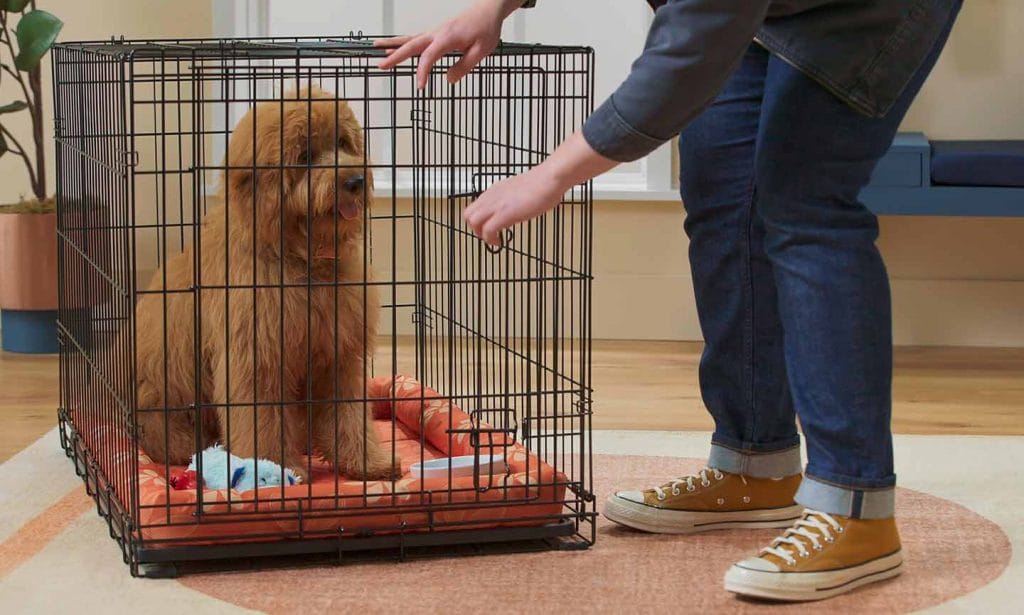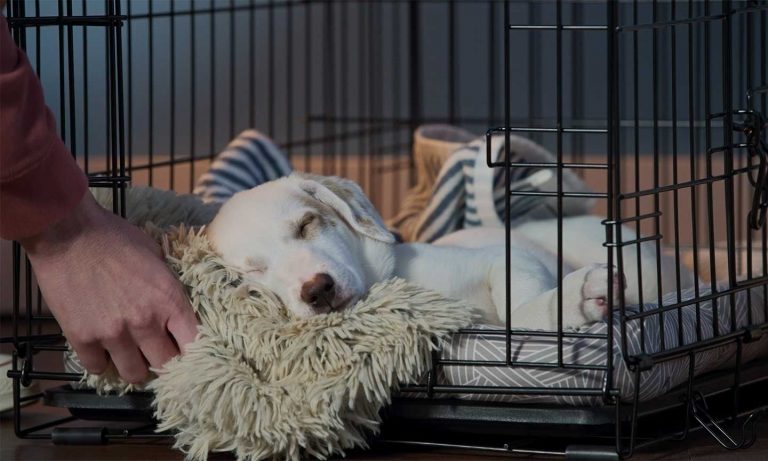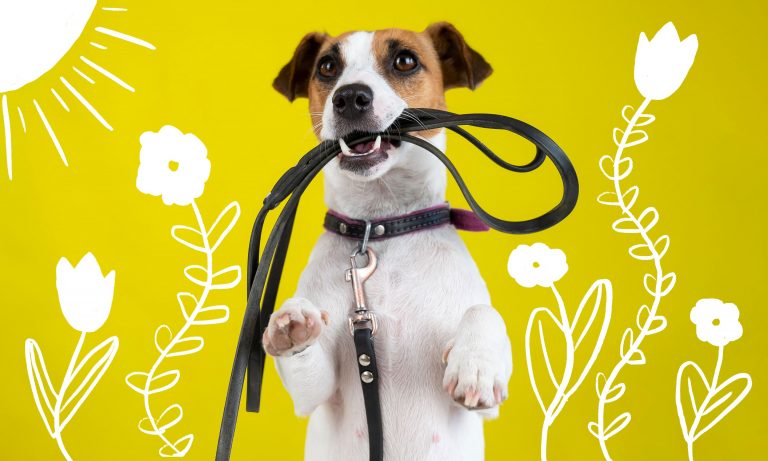Puppy separation anxiety—it’s a phrase that can be as stressful for dog parents as the condition is for their pups. Hey, no one wants their sweet little dog feeling scared or stressed. But here’s the good news: There’s plenty you can do to avoid separation anxiety in your puppy, and even more you can do to treat the condition.
We talked to Dr. Jennifer Coates, DVM, a veterinarian consultant in Fort Collins, Colorado; and Atlanta-based dog trainer and author Victoria Schade to bring you their top tips on soothing an anxious puppy—so you can go about your day knowing your pup is safe and happy at home.
Does My Puppy Have Separation Anxiety?
Before we delve into how to treat puppy separation anxiety, let’s take a moment to define the phrase.
Canine Separation Anxiety:
A stress response a dog experiences when they are separated from the people to whom they are bonded, even for short periods of time.
Puppy Separation Discomfort:
The general nervousness or unhappiness a pet feels when their person leaves.
It's natural for your puppy to feel separation discomfort, aka mildly unhappy or anxious when you leave—you’re their favorite person, after all! But true separation anxiety is a debilitating reaction to your absence. And while the signs of each type of anxiety can look similar, true separation anxiety symptoms are generally more extreme and last for longer periods of time than for a puppy who’s just learning how to be comfortable when alone.
Think of it in human terms: It's normal to be nervous when faced with a new situation, like going to a party where you don't know many people. But someone with a clinically diagnosed social anxiety disorder may become so paralyzed with fear that they can't function under the same circumstances. It’s the same way for our pets. Many puppies and dogs prefer to be with "their" people rather than left alone and may whine or act clingy when they know you're leaving. That can be difficult to see, but it’s not true separation anxiety. Dogs with separation anxiety become so upset when left alone that they can develop destructive behaviors like chewing, digging or inappropriately urinating or defecating.
True separation anxiety in puppies is rare, Schade says, in part because it doesn’t usually take much to distract a puppy. A tasty treat or super fun toy typically lifts their spirits within a few minutes. So take heart: The symptoms you’re noticing in your puppy aren’t likely to reflect severe distress—just a discomfort that’s both natural and common.
Separation anxiety, separation discomfort—as a pet parent, the difference between the two probably doesn’t seem to matter. You just want your puppy to feel happier when you’re away! Read on: Whether your puppy has true separation anxiety or is experiencing separation discomfort, our experts’ advice can help.
What Are the Signs of Puppy Separation Anxiety and Discomfort?
Signs that your puppy may be nervous about being alone include:
- Barking
- Whining
- Destructive chewing
- Pawing at their crate
Of course, some of these are totally normal things to expect from a young pup. So how can you tell the difference?
Start with the vocalizations. Distressed puppy barks and whines are often repetitive and, in the case of barks, high-pitched, says Schade. They also can go on for extended periods—in some cases, for the entire time you’re away. If your puppy’s barks are lower in pitch, intermittent or only last a moment or two, they may just be testing out their voice.
What about chewing? Take a look at their targets. An anxious puppy might dig or chew at their crate or bedding instead of the toys you’ve so lovingly provided. (Of course, some pups destroy their bedding due to boredom or teething, too, so if that’s your puppy’s only symptom, it doesn’t necessarily indicate separation discomfort or anxiety.)
While these symptoms may start as you prepare to leave home, it’s how long they endure that can help you determine if you’re dealing with separation discomfort or clinical separation anxiety. Puppies who are simply learning to be alone usually calm down after a short period—within five to ten minutes. Think of it as taking a few minutes to “settle in”—vocalizing or pacing before relaxing with a toy or falling asleep.
A puppy with true separation anxiety, on the other hand, is more likely to whine, pace or dig the entire time they’re left alone, even if they have a treat-stuffed toy within paw’s reach. That’s a sign there’s something deeper going on than simple discomfort.
What’s Causing My Puppy’s Separation Anxiety or Discomfort?
Besides the natural discomfort of being away from you (your pup’s favorite person in the whole wide world, of course) there are a few common causes for puppy anxiety—and many of them have to do with their crate. Using a dog crate as your pup’s own personal space has plenty of benefits, including helping them feel calm. But if the crate is used incorrectly, it can have the opposite effect. To prevent anxious feelings for your puppy, avoid these common mistakes pet parents make with dog crates:
- Not fully crate training a puppy before leaving them alone for the first time. Like all dog training, crate training takes time to master. Find out more about how to crate train a dog.
- Using a crate that’s too small. If your puppy can’t stand up, turn around and lie down comfortably inside, they’re likely to feel cramped and uncomfortable.
- Leaving a puppy in their crate for too long. If your puppy needs a potty break, they’re likely to feel anxious in their crate. Your puppy can typically “hold it” for as many hours as they are months old, up to a maximum of 4 hours. So if your puppy is 2 months old, you shouldn’t expect them to go without pottying longer than 2 hours.
- Not giving their puppy enough exercise before going into their crate. A restless puppy is more likely to be an anxious puppy.
- Using the crate for punishment. If you use time in the crate as a negative consequence for unwelcome behavior, your puppy will think they’re being punished every time they’re inside it—and that would make just about anyone nervous!
How to Treat Your Puppy’s Separation Anxiety or Discomfort
Here’s the good news: There’s plenty you can do to soothe your anxious puppy. Follow these tips to give your dog the confidence they need.
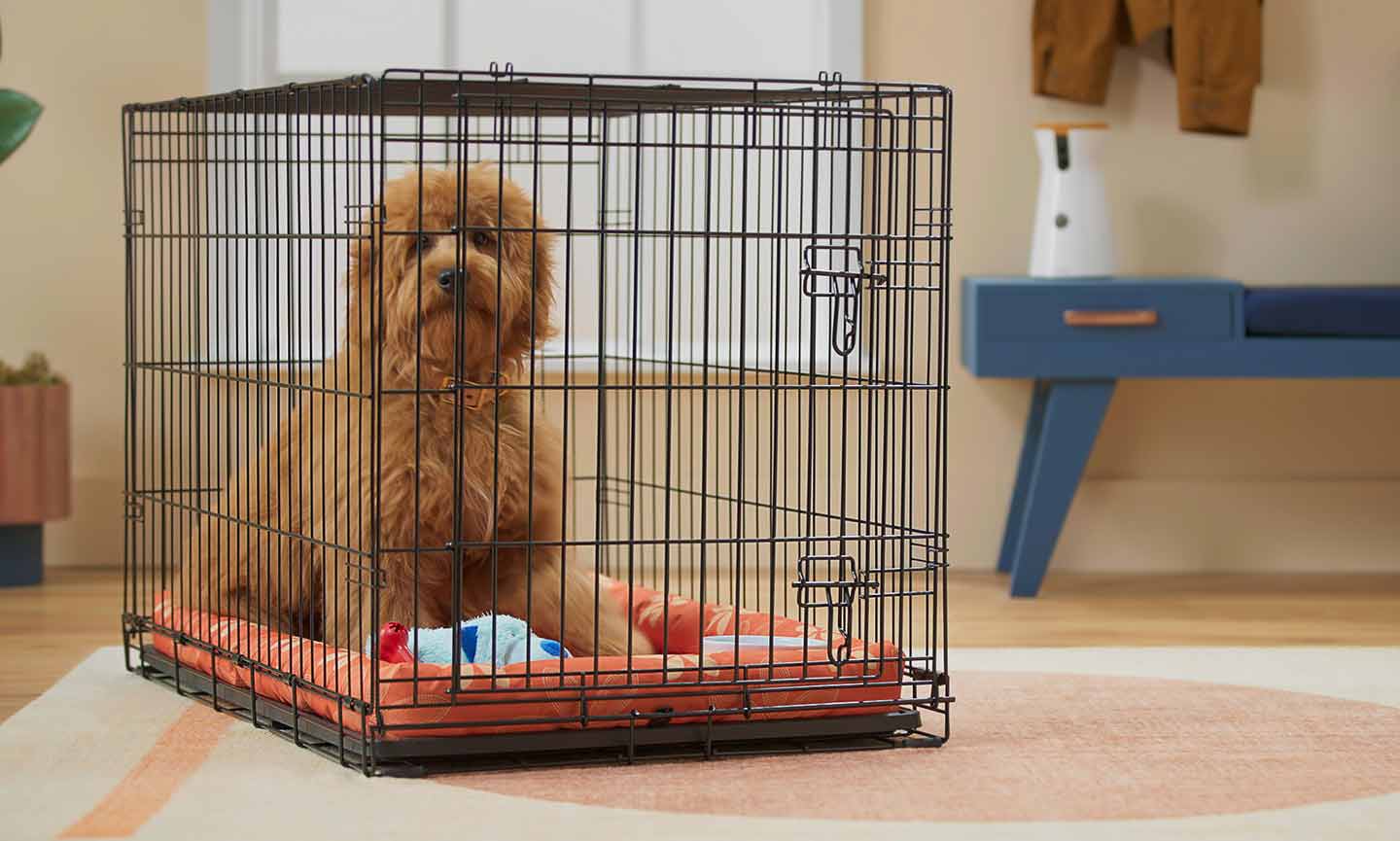
1 Make Sure You’re Using the Right Size Crate
Hey, if you want your dog to feel comfortable in their den, you’ve gotta provide one that fits them! Remember: Your dog’s crate should be big enough that your puppy can stand up, turn around and lie down comfortably inside. But it shouldn’t be too much bigger than that—the goal is for it to feel like a cozy little den just for them.
For puppies, experts suggest using a larger crate that comes with a divider. That way, you can use the divider to create a smaller space when your puppy’s young, and move it or remove it entirely when they’ve grown older (and larger).
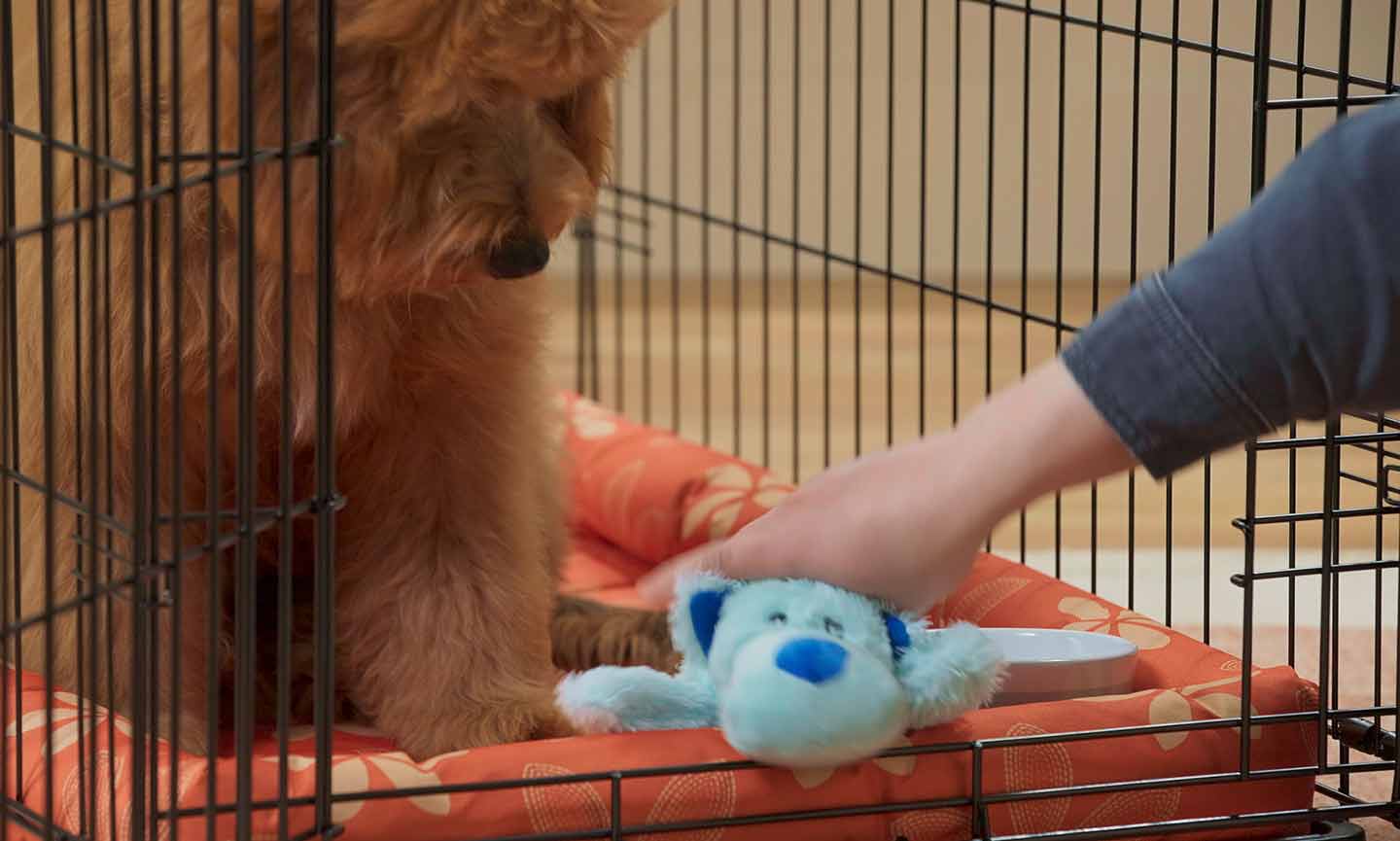
2 Make the Crate a Positive Space
Your puppy’s crate should be their absolute favorite spot (next to your lap, of course). And there are plenty of ways to inspire your dog to love their den. First, make sure it’s a comfortable place for them to be, with a crate-sized pad to lie on. Blankets or clothing that smells like you can help them feel secure in there, too.
Another sure-fire method: Reward your puppy for going inside the crate! When you catch them hanging out in there, shower them with tasty treats or their favorite toys. Treat-dispensing toys and safe chew toys are ideal for distracting puppies from the fact that they’re alone. (Just make sure to supervise your puppy playing with any new toy, to ensure they can’t chew or break it into pieces that could become safety hazards.)
Schade recommends using small, soft, high-value treats like CLOUD STAR Chewy Tricky Trainers Cheddar Flavor Dog Treats or a stuffable toy like the KONG Classic Goodie Bone filled with pet-safe peanut butter (check to ensure it doesn’t contain xylitol, which is toxic to dogs), plain yogurt or KONG Stuff’N Easy Treat Bacon & Cheese Recipe.
With proper training, some puppies will even race to their crate when they get home, because they know they’re going to get a busy toy inside. Now that’s a sign you’re pet parenting right!
Shop Related Products on Chewy

3 Play With Your Puppy—a Lot
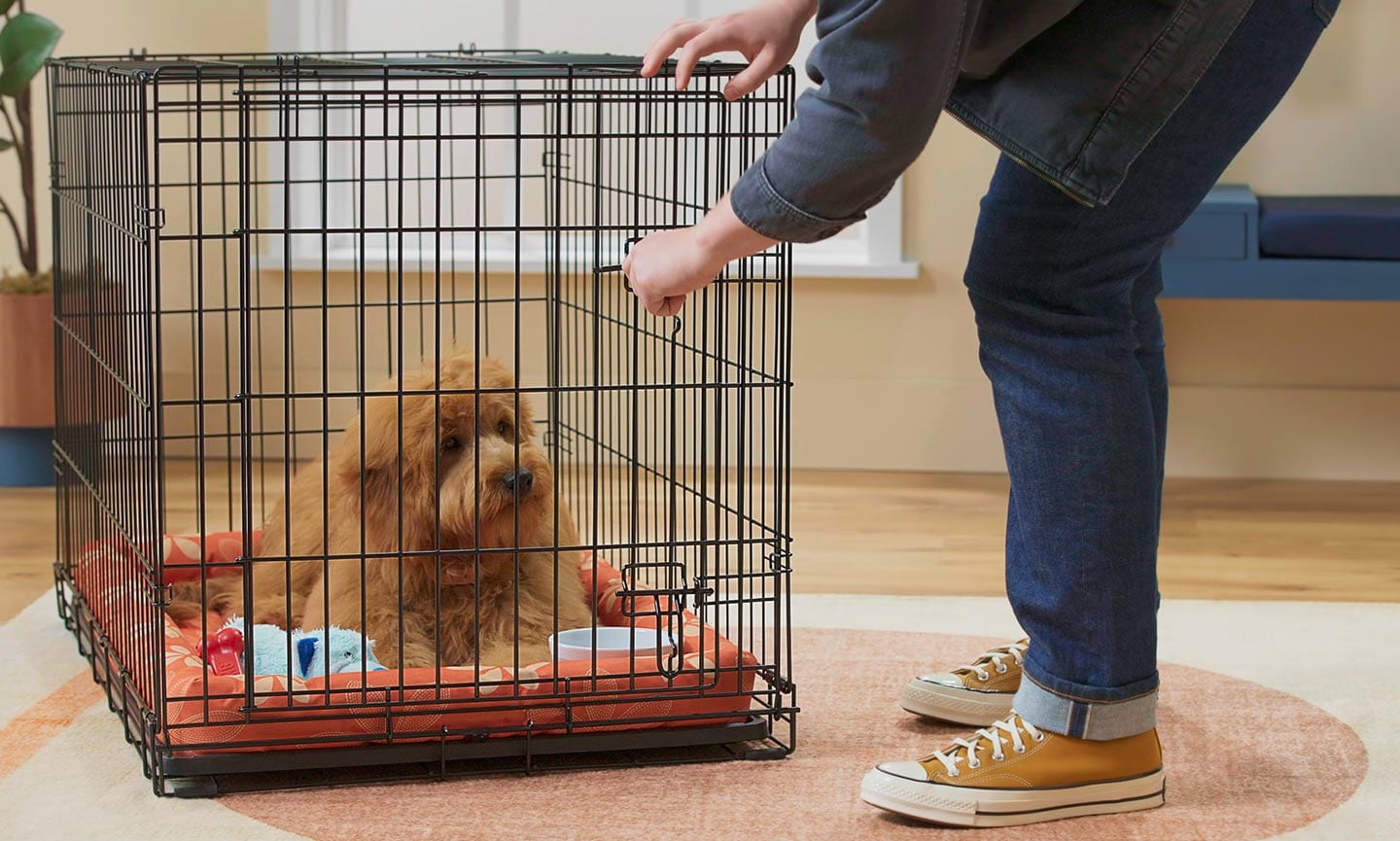
4 Practice Short Departures
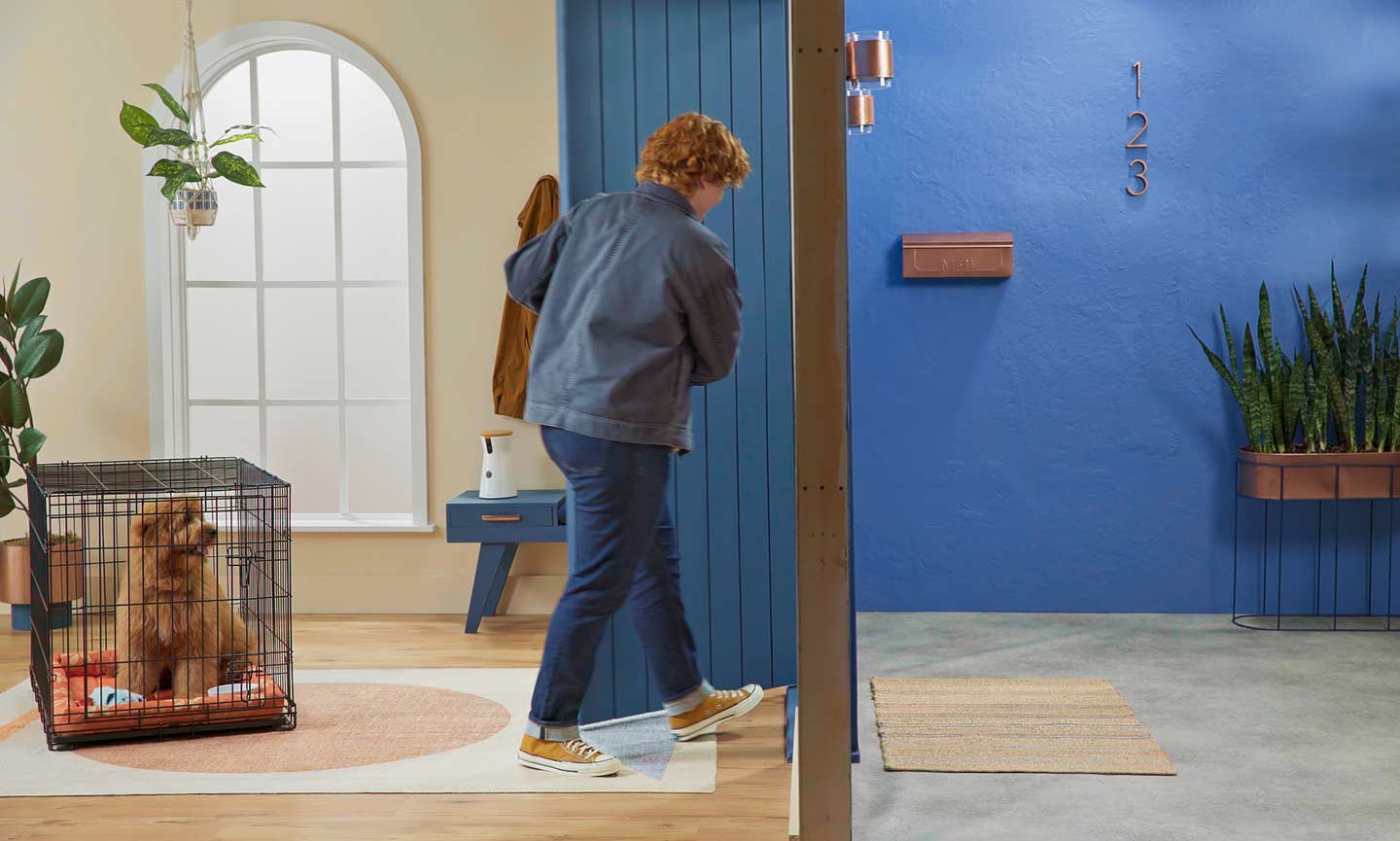
5 Progress to Longer Stays
My Puppy Is Still Anxious—Now What?
If you’ve followed all of these steps and your puppy remains anxious—not settling down soon after you leave home or injuring themselves trying to escape their crate—it’s time to talk to your veterinarian. They can suggest other tactics, like anti-anxiety medications or a behavior modification plan, to help soothe your puppy’s separation anxiety.
Read More
Share:
